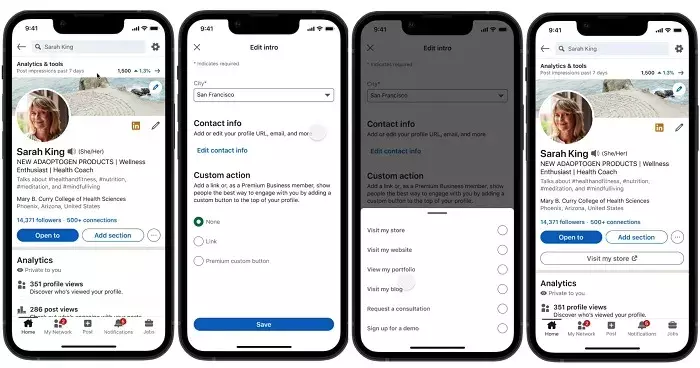LinkedIn has always maintained a delicate balance between professional networking and personal branding. The platform’s recent decision to remove the option for Premium subscribers to add custom links to their profiles represents a pivotal moment in its evolution. Initially introduced as a means to empower users with a call-to-action (CTA) button—such as directing traffic to a website or online store—this feature offered an enhanced way to personalize profiles and engage with connections. Now, however, as LinkedIn evaluates its offerings, this vital tool is being taken away. This decision raises both practical and philosophical questions about the future of professional networking on the platform.
Understanding the Rationale Behind Removal
LinkedIn’s justification for removing custom links suggests that the company is continually assessing what features deliver the most value to users. They state that any existing CTAs will remain in place unless removed, but newcomers to the platform will no longer have the option to add new links. This rationale might imply that LinkedIn believes the feature is underutilized. However, this viewpoint overlooks the potential contributions these links could have made to individual branding, connection-building, and driving meaningful engagement.
While it is true that custom links may not have driven significant traffic for all users, dismissing them entirely disregards diverse user experiences. There might be a host of professionals—freelancers, small business owners, and content creators—who would benefit from increased visibility through custom CTAs. In limiting this feature, LinkedIn risks alienating these users, who are increasingly asserting their presence within the professional social media space.
Discrepancies in Features for Individuals vs. Brands
What raises eyebrows even further is the contrast between individual profiles and Premium Company Pages. While individual users lose a valuable feature, businesses are encouraged to exploit this same tool for greater visibility and engagement. This discrepancy not only sends a mixed message about the value placed on individual users versus businesses, but it also raises issues of fairness in how LinkedIn approaches its diverse member base. With companies benefiting from enhanced CTA visibility that generates significant engagement—reported to be over ten times more traffic—individual professionals are left wondering why their needs are being sidelined.
This disparity gets even more complicated when we consider LinkedIn’s initiative to attract content creators. If the platform aims to foster creativity and diverse engagement, limiting the options for individual branding may be counterproductive. Restricting this creative tool could stifle the diversity of content and professional narratives that thrive on authenticity and accessibility.
The Implications for User Engagement and SEO
In considering the broader implications of this change, it is essential to address how it could influence user engagement and LinkedIn’s SEO potential. The removal of custom links might be an attempt to streamline content and reduce questionable link placements that could tarnish the platform’s credibility. However, this could backfire. Users are increasingly navigating digital spaces that emphasize transparency and authenticity. By limiting their ability to connect their LinkedIn profiles to external resources, LinkedIn may be pushing members to underutilized strategies, hence stunting user engagement.
Moreover, given that potential traffic to external websites is often a significant aspect of digital marketing strategies, individuals could feel disheartened by this arbitrary limitation. After all, LinkedIn’s effectiveness as a networking tool hinges on its ability to facilitate meaningful connections, and reducing users’ chances to link to their work directly undermines that mission.
A Call for Retrospection
While LinkedIn’s removal of custom links may seem like a minor tweak in their features roster, it is a decision rife with consequences. As the platform continues to evolve, it should carefully consider the multifaceted nature of its user base. Restricting a feature that offers individual members the ability to drive traffic and promote their professional endeavors could stifle growth. If LinkedIn ultimately aims to expand its professional ecosystem and maintain its relevance, it must rethink the value it places on individual members versus corporate clients. Only then can LinkedIn truly embody the spirit of professional empowerment it strives to promote.

